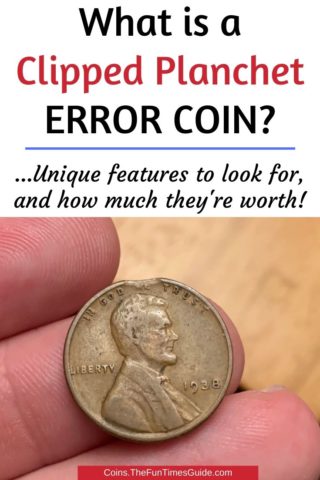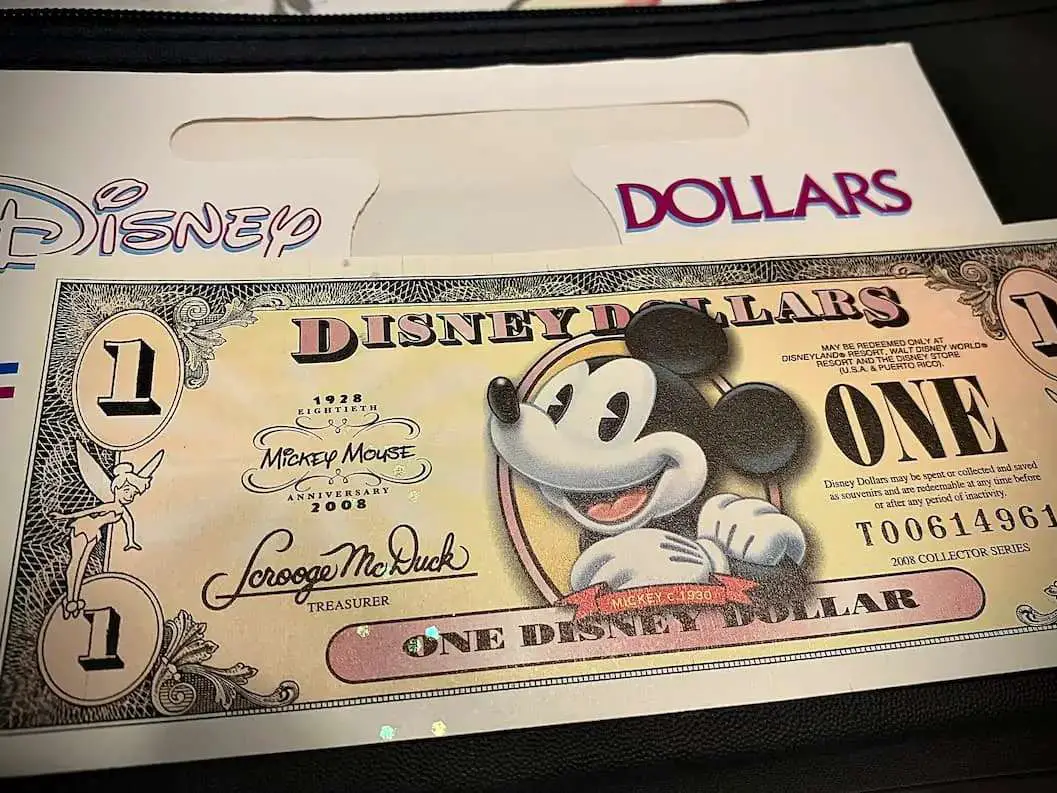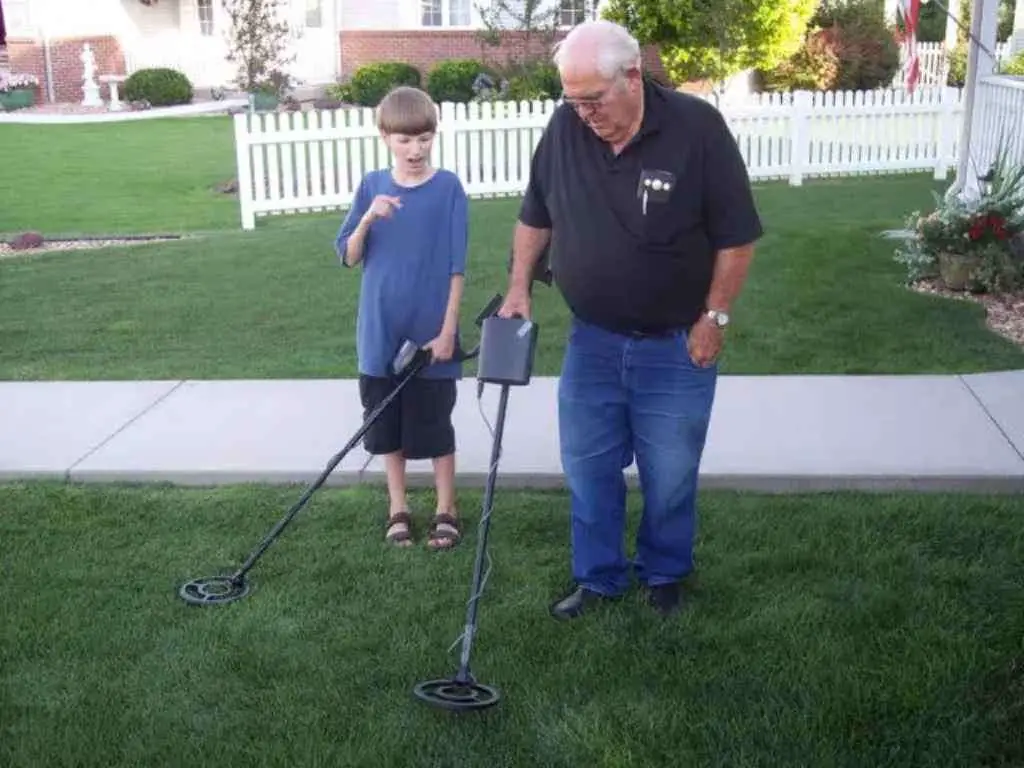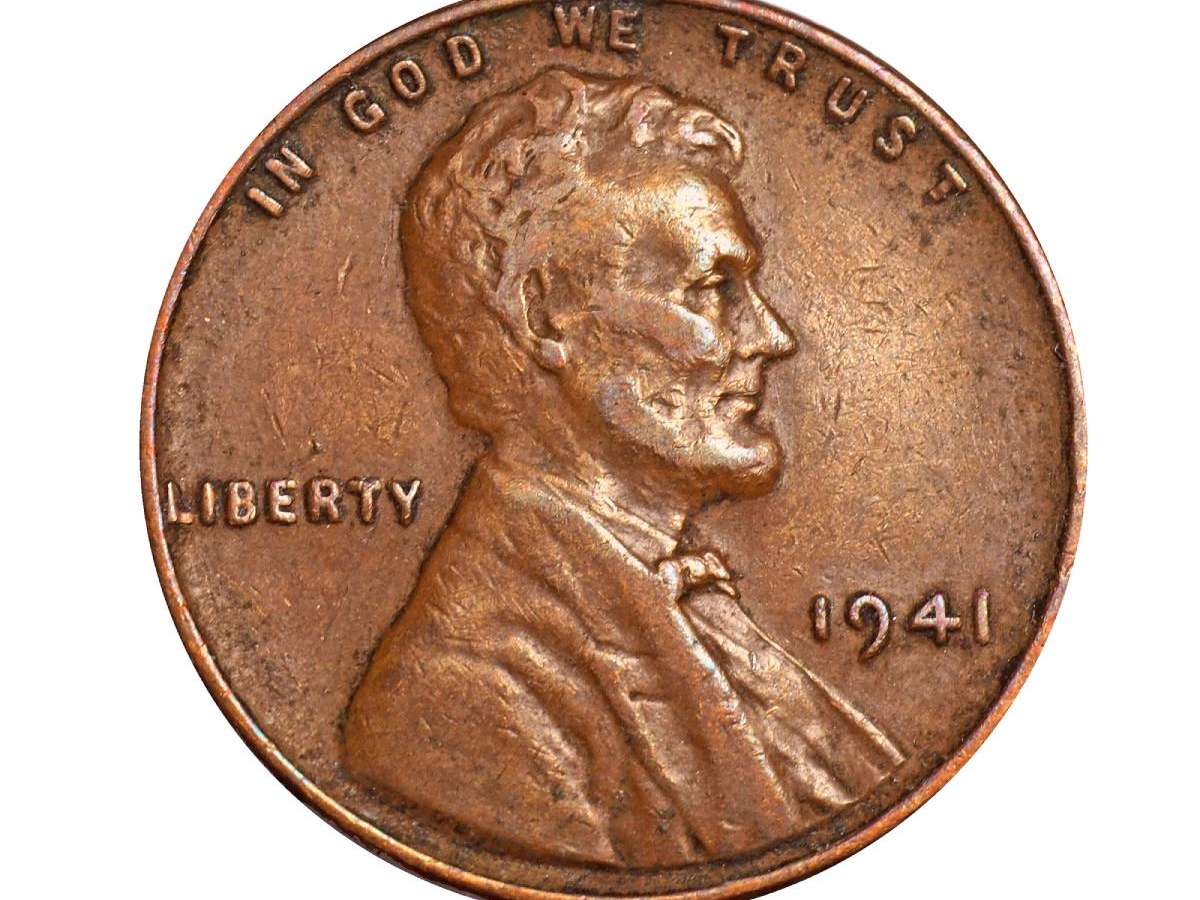If you’re wondering, “What is a clipped planchet and how much are clipped planchet error coins worth?…”
You’ve come to the right place!
Clipped planchets are types of error coins that exhibit flat or crescent-shaped bites taken out of the side of a coin.
While they aren’t necessarily rare coins of outstanding value, they’re still quite fascinating.
Read on to learn more about these crescent-shaped error coins, including:
- The 4 types of clipped planchet error coins
- How this weird error occurs at the U.S. Mint
- What these error coins are worth
- How to tell a clipped planchet from a damaged coin
Types Of Clipped Planchet Error Coins
Clipped planchets represent a separate type of error coin. But those who collect clipped planchets recognize these 4 distinct types:
- Straight-edge clips — There’s a straight edge on the coin where it was mis-cut.
- Curved clips — Due to a crescent-shaped area of missing metal, the coin has a concave curve-shaped edge.
- Irregular clips — The trailing edge of the metal strip appears ragged, giving the coin an irregular edge.
- Bowtie clips — There are 2 curved clips on opposite sides of the same clipped coin, creating the appearance of a bowtie… a most unusual type of error.
How Are Clipped Planchet Coins Made?
Millions of perfectly round coins are struck every day by the United States Mint. But sometimes the long strips of blank metal are mis-fed into the blanking press that cuts the strip into round pieces of metal (or blank planchets). If the metal sheets are misaligned with the cutting device, then the blanks cut from the sheet won’t be perfectly circular — resulting in a mint error coin:
- If the punch is overlapping the leading edge of the metal, it makes a straight clip or irregular clip. Depending on whether the punch hits the side of the metal sheet or the trailing edge determines what type of clip is created in this erroneous punch.
- When a punch hits an area of the strip of metal that overlaps a hole from a previous punch, it creates a curved clip or bowtie clip.
More specifically, these are the 4 possible outcomes — an explanation of each of the 4 types of clipped planchet error coins:
- Straight-edge clips — These feature a straight edge on one side of the coin.
- Curved clips — The error here is a crescent-shaped miscut on either one or two sides of the coin.
- Irregular clips — An irregular clip shows the straight-ish but ragged edge unfinished leading or trailing end of the sheet of metal from which the blank is cut.
- Bowtie clips — These boast 2 curved clips on opposite ends of the coin.
For a better understanding of how coins are made, check out this video that shows the blanking process at the U.S. Mint:
How Much Are Clipped Planchets Worth?
Values for clipped edge errors are all over the board. Most modern clips range in value from $5 to $10, but many are worth much more.
The value of clipped planchet error coins depends on these 3 things:
- How significant the clipped error is
- What coin the error is found on
- The overall condition of the error
While all error coins are scarce collectibles, some are more common than others.
Clipped planchets aren’t necessarily rare as a category, but they are very much sought after by collectors. And, as with other error coins, values for curved clips, irregular clips, straight clips, and bowtie clips vary — depending on the merits of each individual piece.
RELATED: Differences Between Rare Coins And Scarce Coins
The values listed below are approximate averages, regardless of whether an individual coin shows a curved, straight, or irregular edge:
- Indian Head penny — $12 to $20
- Lincoln Wheat penny — $3 to $10
- Lincoln Memorial penny — $3 to $8
- Buffalo nickel — $15 to $25
- Jefferson nickel — $3 to $10
- Mercury dime — $15 to $25
- Silver Roosevelt dime — $7 to $12
- Clad Roosevelt dime — $3 to $7
- Silver Washington quarter — $15 to $25
- Clad Washington quarter — $3 to $10
- Bicentennial quarter — $30 to $50
- 50 States quarter — $15 to $20
- Franklin half dollar — $35 to $50
- Kennedy half dollar — $20 to $30
- Bicentennial half dollar — $40 to $50
- Morgan or Peace dollar — $50 to $100
- Eisenhower dollar — $30 to $40
- Bicentennial dollar — $50 to $75
- Susan B. Anthony dollar — $20 to $30
- Sacagawea dollar — $75 to $100
* Values are for clipped planchet error coins in average circulated condition.
How To Tell A Genuine Clipped Planchet Error From A Fake
While clipped planchets are fantastic errors, some damaged coins may take on the appearance of a clipped planchet.
So, how do you tell a legitimate clipped planchet from a damaged coin?
There are at least 4 things you should look for on a coin you believe to be a clipped planchet:
- “The Blakesley Effect” — Weakness in the design near the rim and in the rim itself on the opposite side of the coin where the clip occurs is known as the Blakesley Effect. While not all clipped planchets exhibit the Blakesley Effect, it’s prominent on many such errors.
- Rim fadeout — The rim near the clip itself should gently fade into the clip. It shouldn’t just sharply stop where clip is, but rather taper into it.
- Design flow — Just as the rim tapers into the clip, the design elements near the clip will also appear to stretch into the missing area of the clipped planchet.
- Belly line — The belly line is seen on the exposed part of the clipped edge, and it’s where the breakaway occurred during the punching process. This part of the clipping process leaves one half of the clipped edge (upper or lower) smooth and the other half rougher in appearance.
In this video, you can see some cool clipped planchet error coins up close:
Like this post? Save it to read again later… or share with others on Pinterest!
I’m the Coin Editor here at TheFunTimesGuide. My love for coins began when I was 11 years old. I primarily collect and study U.S. coins produced during the 20th century.
I’m a member of the American Numismatic Association (ANA) and the Numismatic Literary Guild (NLG) and have won multiple awards from the NLG for my work as a coin journalist. I’m also the editor at the Florida United Numismatists Club (FUN Topics magazine), and author of Images of America: The United States Mint in Philadelphia (a book that explores the colorful history of the Philadelphia Mint). I’ve contributed hundreds of articles for various coin publications including COINage, The Numismatist, Numismatic News, Coin Dealer Newsletter, Coin Values, and CoinWeek.
I’ve authored nearly 1,000 articles here at The Fun Times Guide to Coins (many of them with over 50K shares), and I welcome your coin questions in the comments below!







